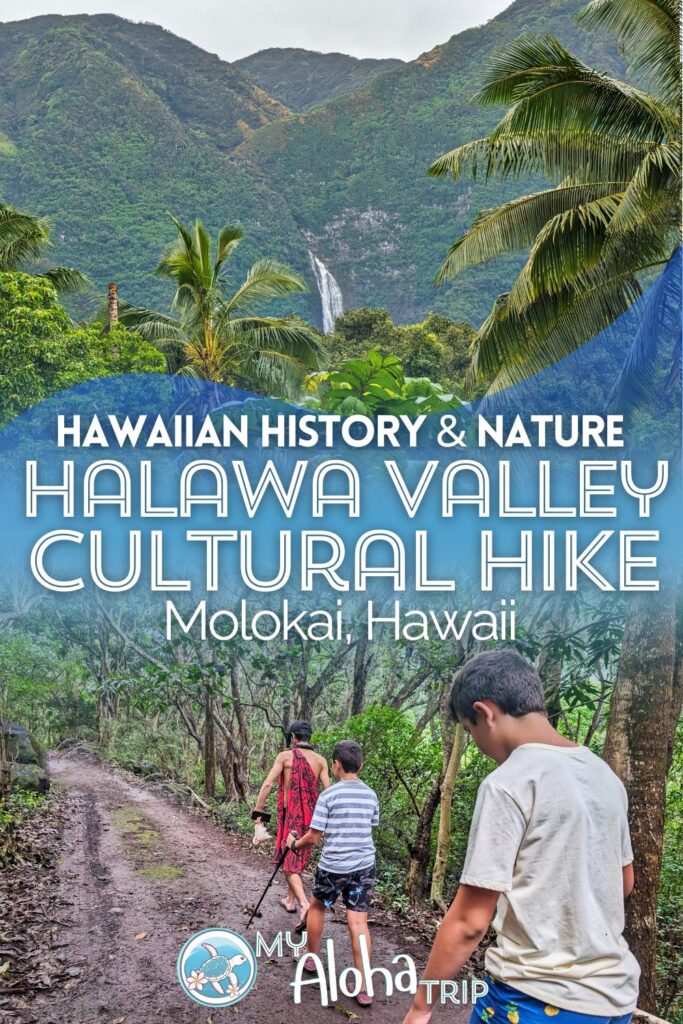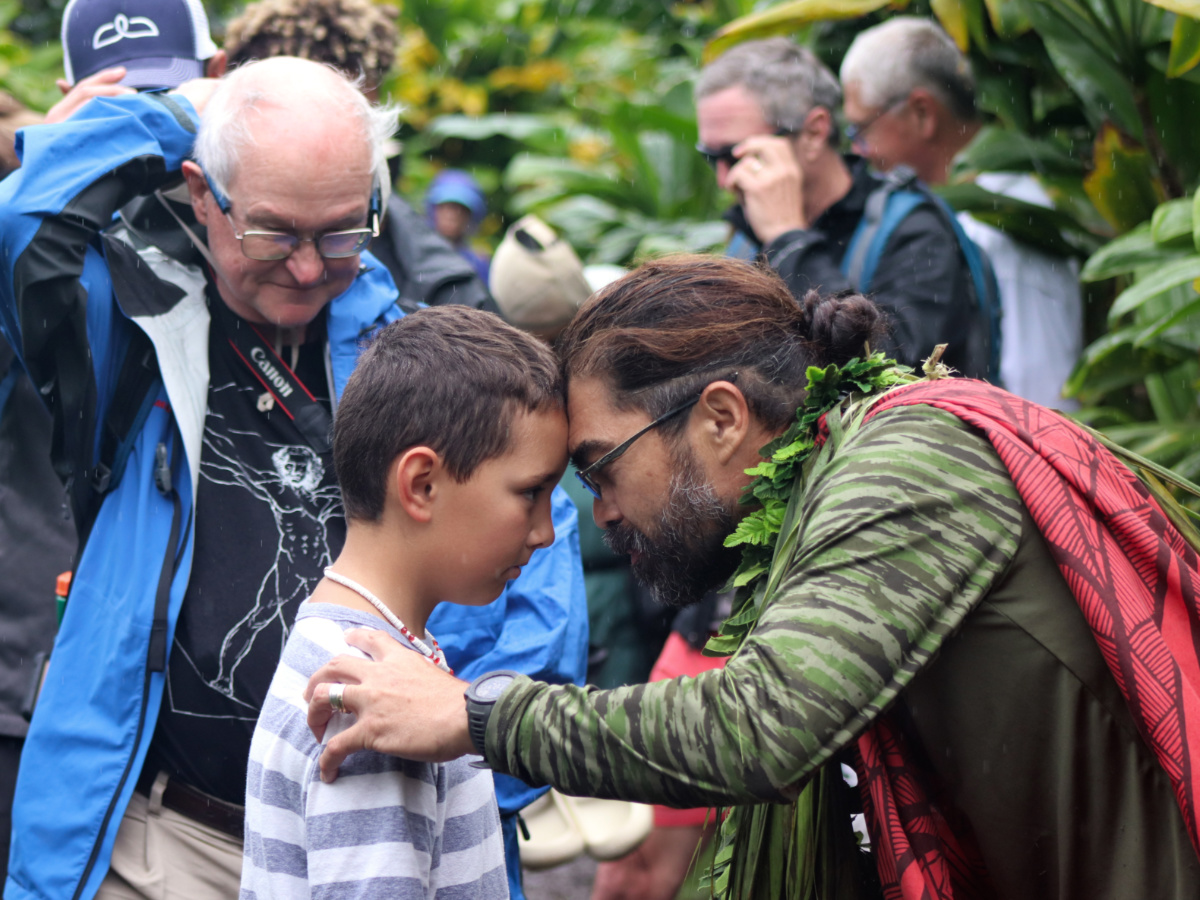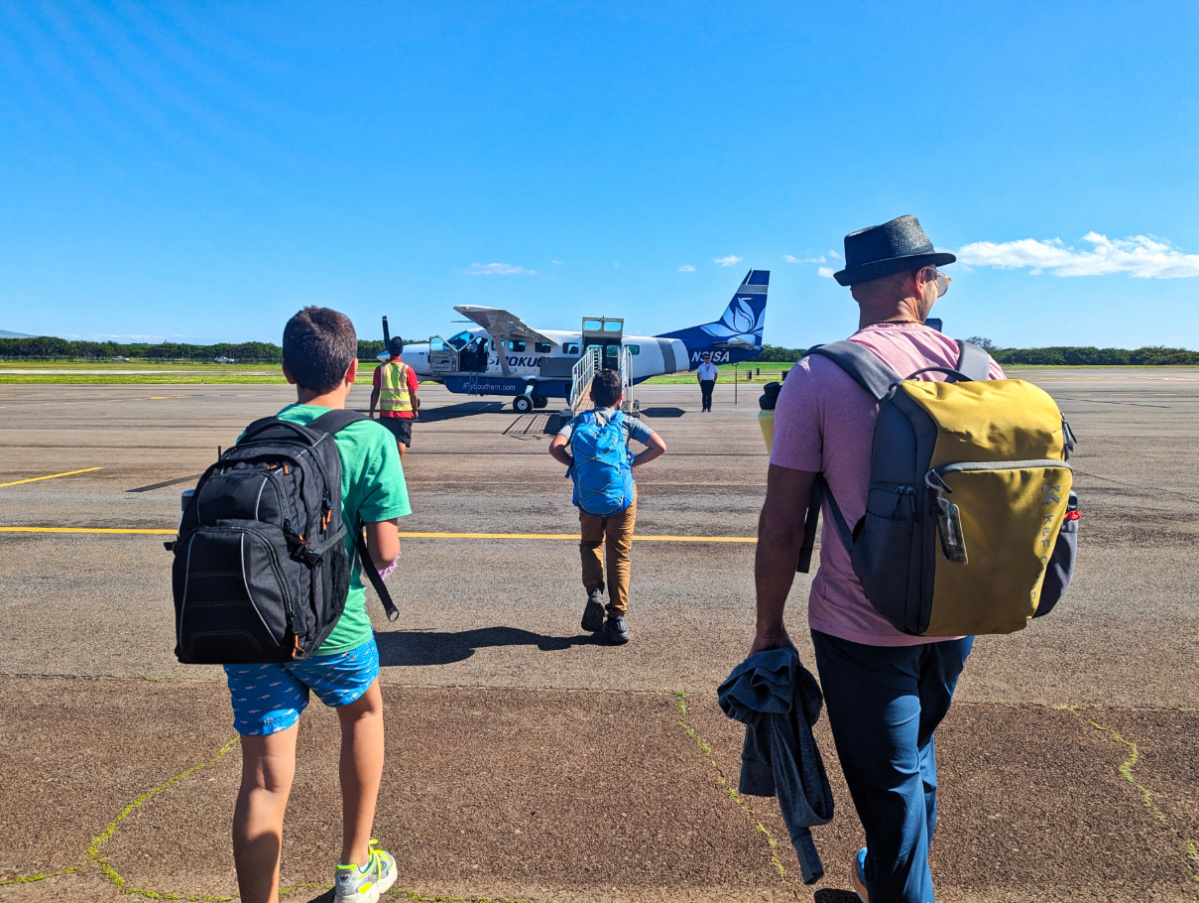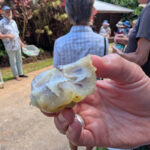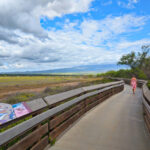Very few people get the pleasure of visiting Molokai, and that’s okay. It’s very much a quiet island with very small communities, and wonderful families living their lives keeping traditional practices alive. If you’re coming to Molokai and would like to learn about the island and the Hawaiian way of life, one of the best things you can do is visit the Halawa Valley for a guided cultural hike through a traditonal taro farm. This experience is led by Greg and his family as they lead your through their families land, sharing stories about the Hawaiian people, the tsunami that wiped out the Halawa Valley and how Molokai farms are a part of keeping culture alive.
If you are going to visit Molokai, this is one of the best things you can do while you’re on-island. It’s both a great opportunity to learn and a you get to support a really cool family who is working to keep the culture alive. If you have any questions about doing the Halawa Valley Cultural Hike or visiting Molokai, please leave a comment or send us a note. We’re always happy to share more and help others plan a great Aloha trip.
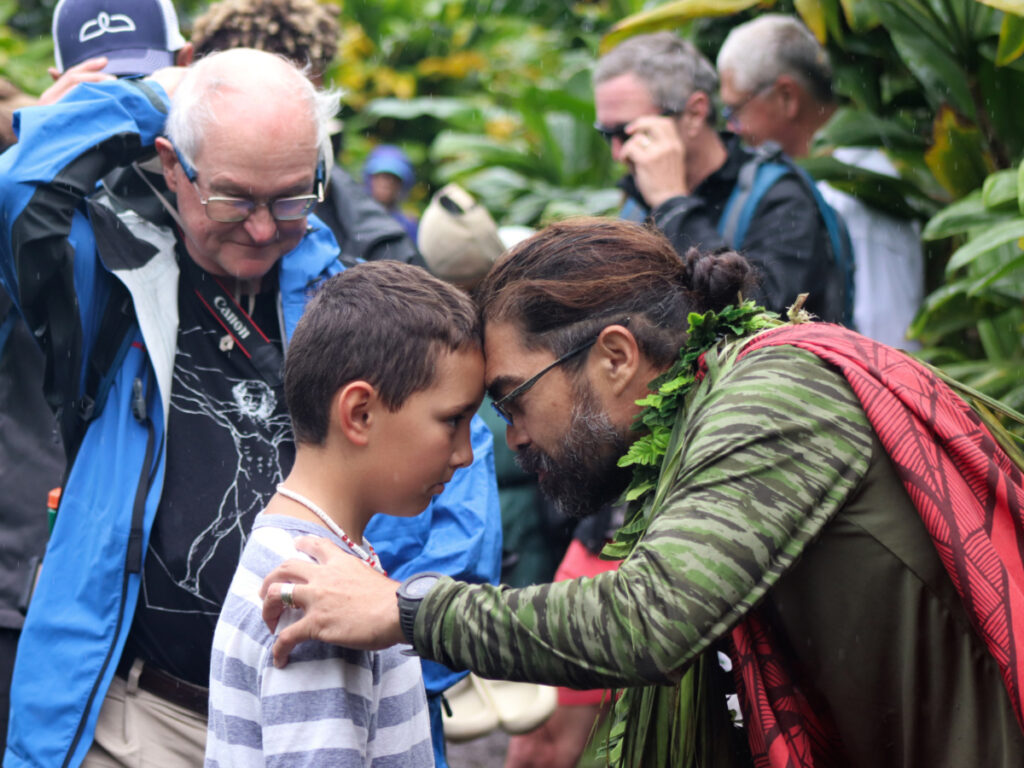
Why Visit the Halawa Valley on Molokai
Because Molokai is such a quiet, local island, there are not many tourism opportunities and access to public lands is quite limited. If you do the Halawa Valley Cultural Hike you get to both enjoy the beauty of Molokai and you get some great insight into the island and its people. Greg and his family have held the land of the Halawa Valley for generations and continue to farm it as has been done for centuries. Doing the Halawa Valley Cultural hike he and his family offer is really interesting and unlike any other guided experiences we’ve done on any of the Hawaiian Islands.
Something that really stood out to me as we visited the Halawa Valley and did the hike was how important learning about Hawaiian customs and family values is to our guides. While we got to see some cool stuff and hear about axis deer and taro farming, family customs and preserving generations of history was a continual theme. Greg and his family have such a wonderful sense of pride in both their current life and the traditions they carry on from their ancestors on Molokai.
For the kids, I think their favorite part of our visit and doing the Halawa Valley Cultural Hike was actually getting to work with our guide to make poi. If you’re not familiar with poi, it’s made from taking the taro root and pounding it until it becomes smooth and gummy. It’s then served with pork or fish (or eaten on its own). I don’t love poi, but I always have a little when it’s offered, especially by a host who’s sharing their home and traditions with us. That’s really what I took away from the whole experience doing the Halawa Valley Cultural Hike is that being open and willing to hearing others’ stories and about their culture is why we travel and what makes meaningful experiences.
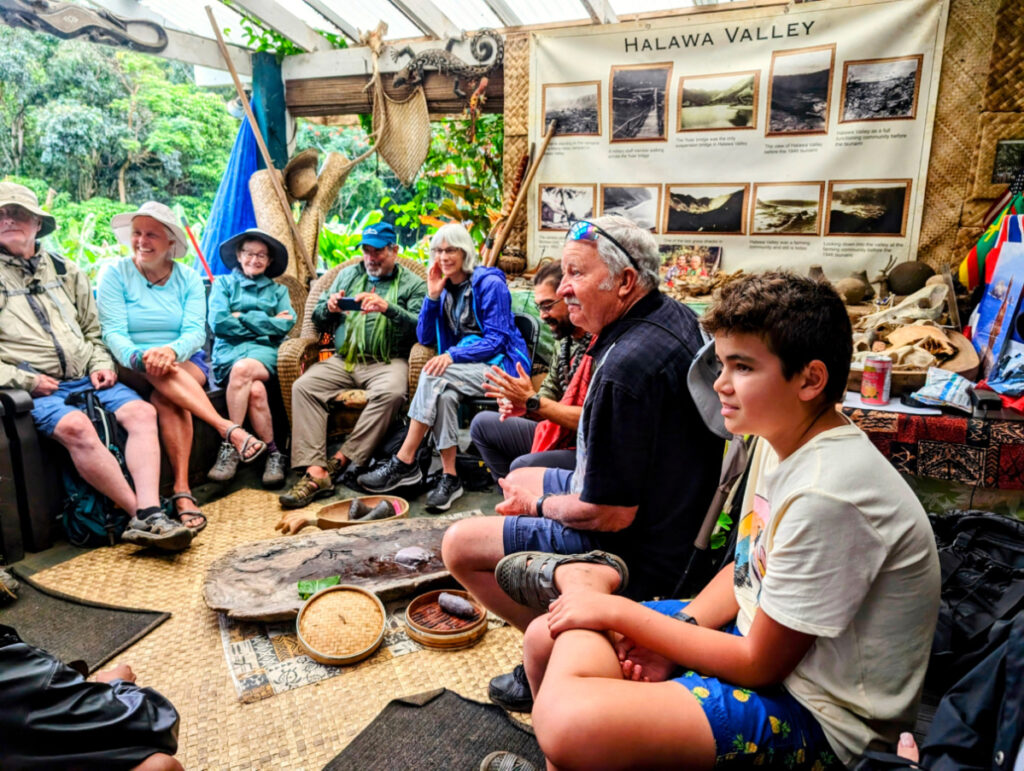
Tips for a Great Cultural Immersion in the Halawa Valley
You do need to arrange your Halawa Valley Cultural Hike in advance or be a part of a group. While you can visit the Halawa Valley Beach Park on your own, if you’d like to visit the taro farm, engage with the residents of the valley or do the hike on private land to the waterfall, that must all be done through the actual guide/owner/steward of the valley. There are many places in Hawaii, and in particular Molokai, that are beautiful and epic, but are on privately held lands. ALWAYS respect the locals and residents and DO NOT TRESPASS for activities and sights you want to experience.
Here at the Halawa Valley there is a gorgeous waterfall at the end of it, but hiking all the way to the falls is only an option when the weather permits. Like many parts of each island, the Halawa Valley is susceptible to flash flooding and if there’s even a slight chance of that, the guides cannot proceed up the valley and risk everyone’s safety. Don’t worry though, if that’s the case you still get to explore the valley and the experience shifts more to learning as you visit the taro farming fields and such. It’s a small operation, but a really unique agritourism opportunity.
When you’re booking your visit to do the Halawa Valley Cultural Hike, plan extra time so you also can spend an hour or two at the Halawa Beach Park, which is very unusual for a Hawaiian beach. Covered in boulders and dark sand, it’s a very unique beach. If you’re flying out with Mokulele Airways in the same day, be sure that you create your plan so that you can get to the Molokai Airport (MKK) with plenty of time.

Being Prepared for all Weather on Molokai
If you’re just planning to visit the taro farm and hang out with Greg to learn about Hawaiian culture and history, and to hear about how the tsunami changed the north shore of Molokai forever, you won’t need to think too much about your gear or footwear. You’ll be welcomed to the ohana’s guest space that is covered and easy to enjoy your learning experience, and then if you want to see more of the property, they’ll guide you and the pathways are well maintained.
If you’re doing the Halawa Valley hike to the waterfall, you’ll need sturdy shoes that can get wet and muddy. I like Keen sandals for hiking in Hawaii (especially in Kokee State Park or for doing the Kalalau Trail on the Na Pali Coast), and for the rough trail and stream here in the Halawa Valley, rough sandals like this are great. You’ll also want to dress in quick dry clothing if you’re hiking. If there’s one thing that’s consistent across much of Hawaii it’s that the rain and mist will roll in, even on a day with a great weather report. That’s just the thing about being an island out in the Pacific Ocean. A rain jacket is pretty useless, as is an umbrella, so it’s best just to embrace being a little wet.
For sure you’ll want to bring your camera when you visit Greg and his ohana, as they share a really unique and beautiful area with you as you explore. From the taro fields to the fruit trees and birds, there’s always something to capture interesting photos of, even on a rainy day. And if you’re hiking to the waterfall, you may get a chance to see axis deer and several species of endemic birds. I think a big lens is ideal when you’re here, particularly for photographing axis deer as they are very jumpy and don’t hang around.

Getting to the Halawa Valley on Molokai
From Kaunakakai, the main town area that visitors come into or can stay at, it’s a little over an hour’s drive. You can’t get lost. You simply head east from town and enjoy the beautiful drive along the coastline, and then you’ll go up towards the hills and cliffs. The road is quite windy, but there are good spots to pull out along the drive to chill out and take your time. If you want to arrive early, you’ll be meeting your guide at Halawa Beach Park. There is plenty of parking here most days, so arrive early and enjoy this really unique stream and beach before your Halawa Valley hike.
Note: if you’re doing the Hawaiian Seascapes sailing with UnCruise, transportation to the Halawa Valley is prearranged.
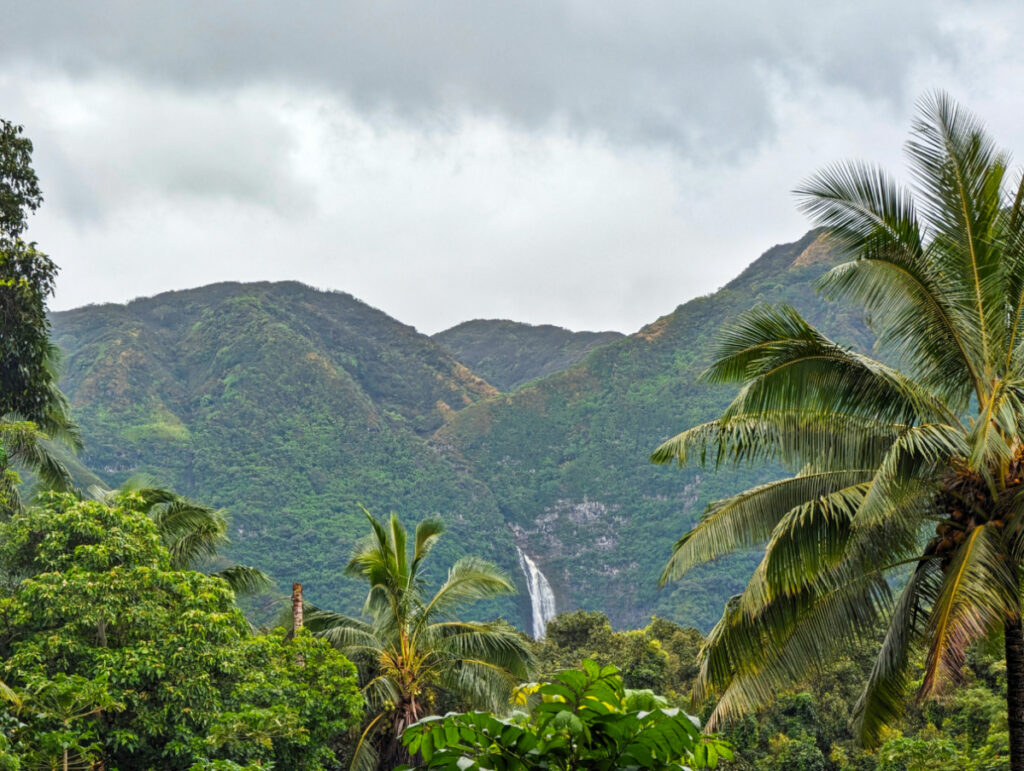
Halawa Valley Cultural Hike Operating Info
To complete your planning, here is all the information to plan and book your experience learning about Molokai and Hawaiian culture.
- Operating Dates/Season: year round, check CALENDAR HERE for available dates
- Tour office phone number: 808-542-1855
- Company website: tour and visit information here
- Arrival address: 14-777 Kamehameha V Hwy, Kaunakakai, HI 96748
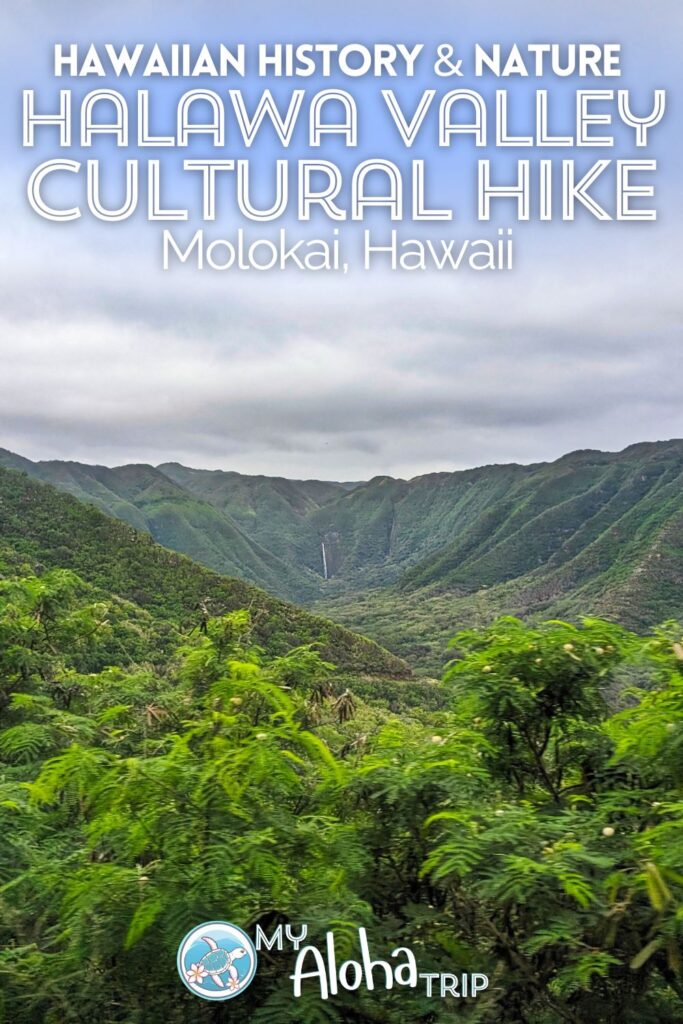
More Things to do on Molokai
Because so few people come to Molokai, it is not as developed as any of the other Hawaiian Islands. It’s so quiet and there are very few services as you navigate the few roads around the island.
I hope you’ll consider doing the Halawa Valley Cultural tour. It’s one of the best ways to learn about this unique island and really shows off the beautiful world of Molokai. If you have any other questions about Molokai or planning unique travel experiences in Hawaii, please leave a comment or send us a note. We’re always happy to share more and help you plan a beautiful Hawaii trip. Aloha!
